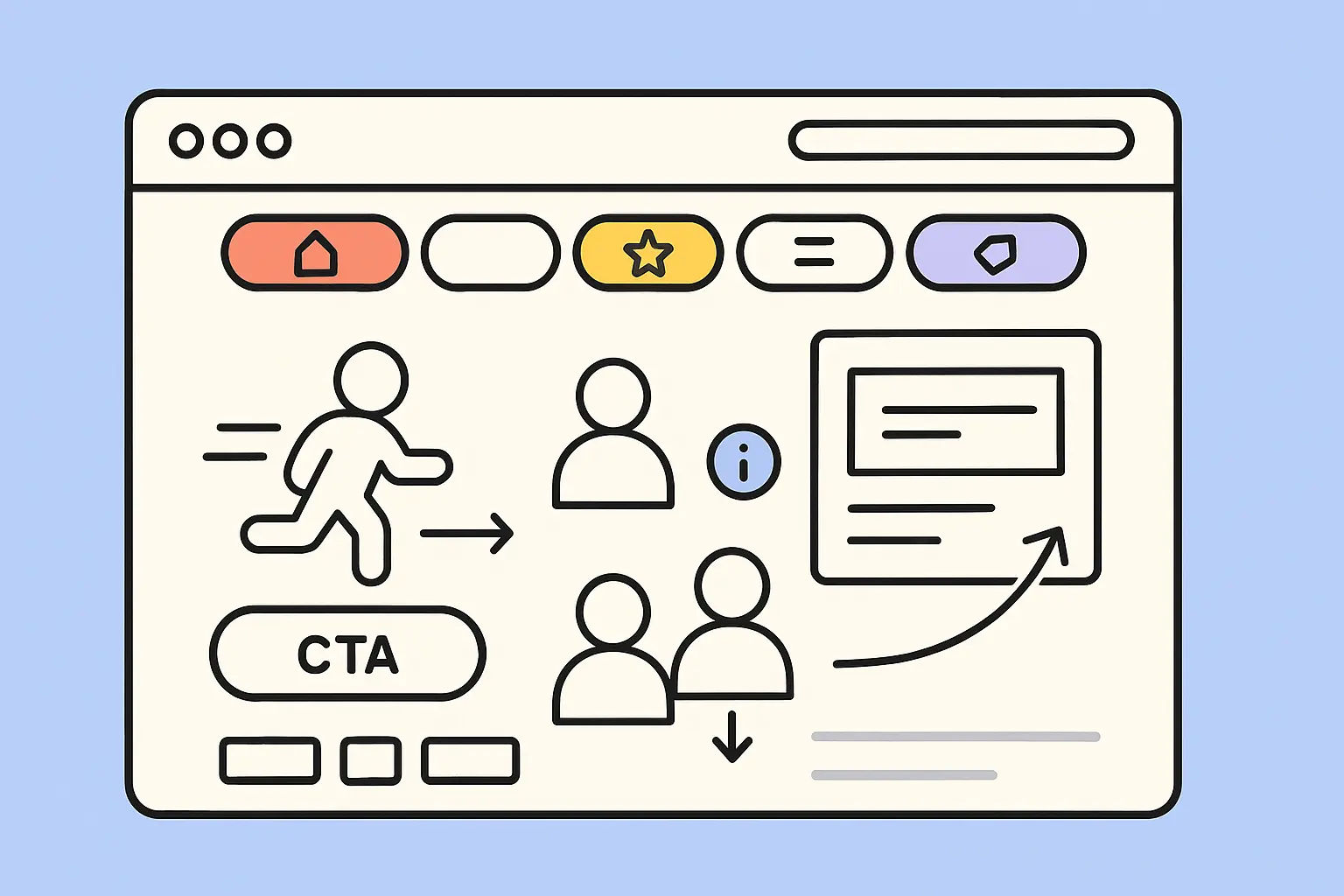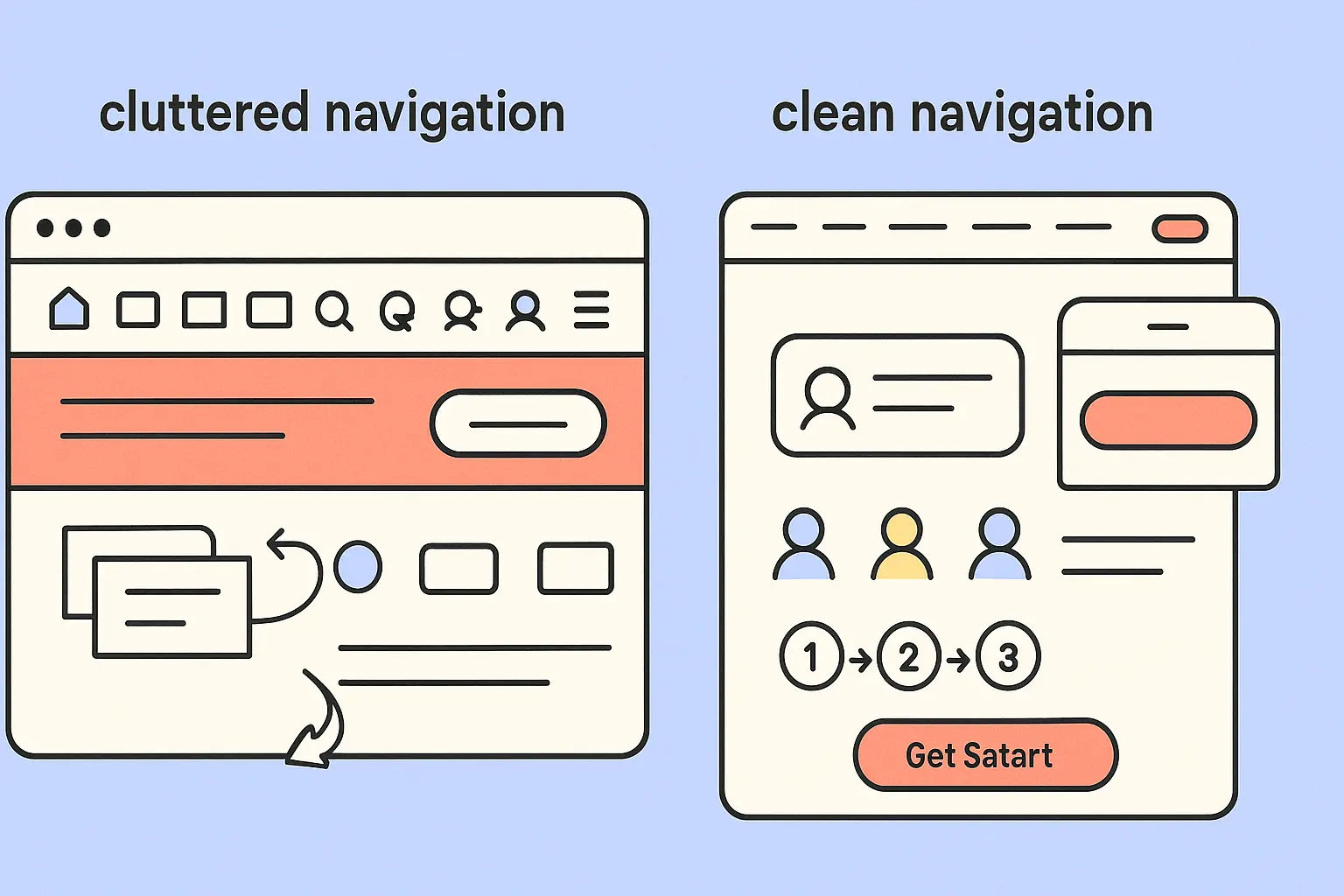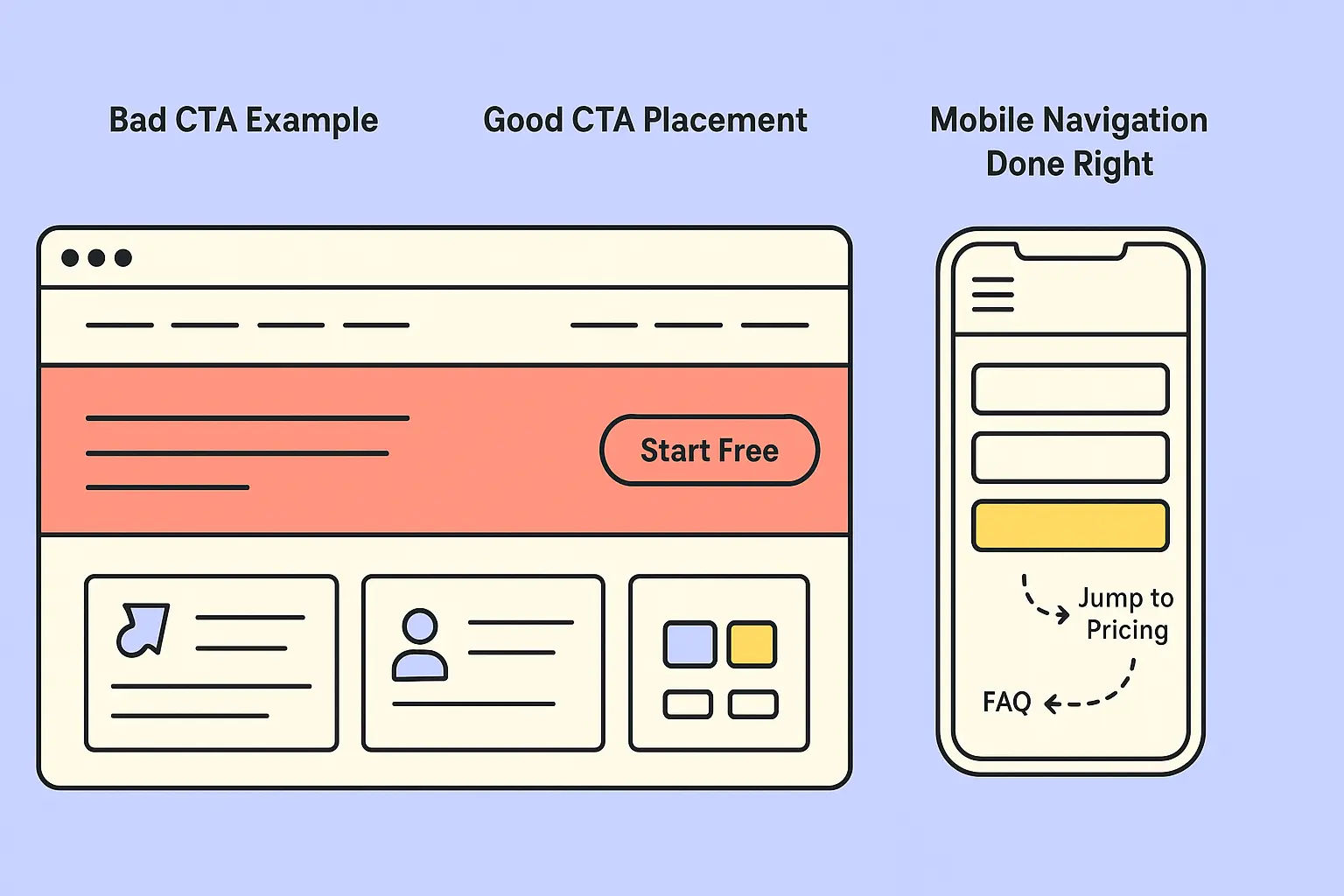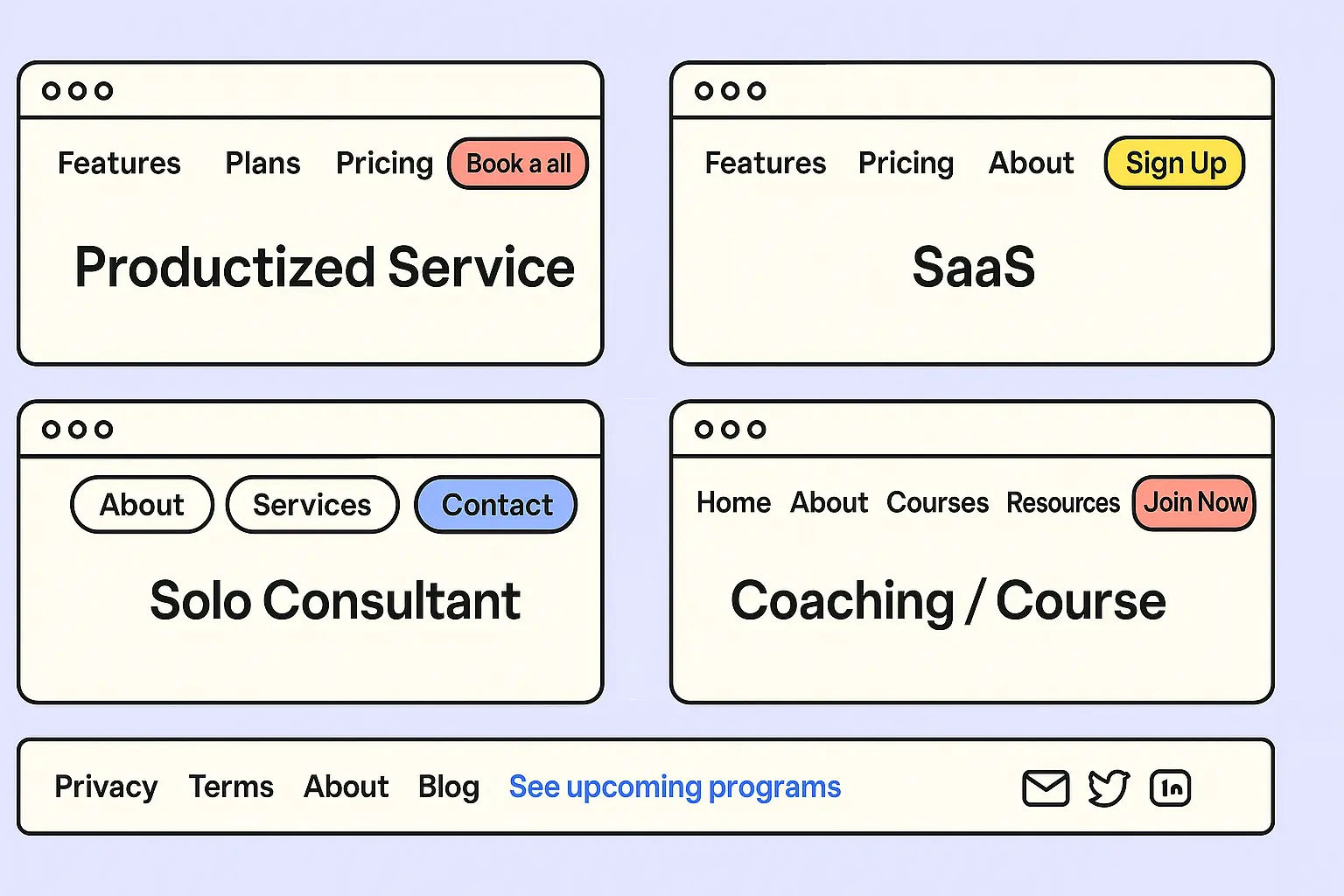
Visitors Don’t Click Everything So Stop Giving Them 12 Choices
Most websites have too many links in their nav.
- Services
- Solutions
- About
- Blog
- Resources
- Careers
- Book a demo
- Contact us
But modern users skim. They scan for one next step. And when your nav feels overwhelming (or vague), they leave.
This post shows how to build a smarter, conversion-focused navigation that works on desktop and mobile and nudges visitors to take action faster.
What Your Navigation Really Needs to Do
Navigation isn’t about listing everything. It’s about helping three types of visitors:
- The ready-to-buy visitor (just needs a CTA)
- The curious-but-not-sure visitor (needs clarity)
- The repeat visitor (knows what they want)
A smart nav answers three questions:
- Where do I go to learn more?
- Where do I go to take action?
- Where do I go to trust this?
If your nav does that you’re good.
Mistake 1: Listing Pages Instead of Framing Decisions
Most navs sound like a sitemap.
Instead, use language that nudges next steps:
- “What We Do” instead of “Services”
- “Why Us” instead of “About”
- “Start Here” instead of “Contact”
- “Plans” instead of “Pricing”
- “Resources” instead of “Blog”
Good navs guide. Great navs remove friction.
Mistake 2: Hiding the CTA in a Sea of Links
Your main action shouldn’t be buried.
Do this:
- Make your main CTA a distinct button not just a text link
- Use contrast color to separate it from other nav links
- Keep it right-aligned (on desktop)
- Use first-person or benefit-driven language
Examples:
- Book a Call
- Start Free
- See Pricing
- Get the Guide
- Try the Demo
Your nav should have one button that says: “This is where to go next.”
Mistake 3: Using Dropdowns Without a Reason
Dropdowns aren’t always bad but most of them hide content visitors should see.
Only use a dropdown when:
- You have more than one sub-offer (e.g. 3 services)
- You need to separate types of content (e.g. templates vs. tutorials)
- You can group links under one clear label
Otherwise? Flatten the nav. Less friction = more clicks.
Mistake 4: Making Mobile Navigation an Afterthought

Mobile-first nav matters more in 2025 than desktop.
What to include:
- Clear CTA in the sticky nav or hamburger menu
- “Jump to” anchor links for one-pagers
- Tap-friendly menu items with 44px+ height
- No auto-collapsing menus that hide everything
- Avoid stack overflow (5+ nested levels = chaos)
Test your nav with your thumb, not your mouse.
Smarter Navigation Structure (By Business Type)
Here’s what works based on site focus:
Productized Service Site
- What We Do
- Who It’s For
- Pricing
- Testimonials
- Book a Call (button)
SaaS / Software Site
- Features
- Plans
- Why Us
- Docs / Support
- Start Free (button)
Solo Consultant Site
- Services
- About
- Results
- Free Guide
- Work With Me (button)
Coaching / Course Site
- Programs
- About You
- Free Resources
- Testimonials
- Join Now (button)
Your nav should reflect how your buyer moves not how your site is structured.
Smarter Footer Navigation (Yes, It Matters Too)

The footer is your secondary nav not a dumping ground.
Use it to:
- Reinforce trust (terms, privacy, accessibility)
- Offer quick links (Services, About, Blog)
- Show a soft CTA (e.g. “See upcoming programs”)
- List contact details, socials, or a mini nav
Think of it like your site’s “last chance to click.”
Smart Navigation = Smart Decisions
Every link in your nav adds or removes friction.

Ask yourself:
- Does this label make sense to a first-time visitor?
- Is the next step obvious and visible?
- Is there one clear CTA that stands out?
- Can someone on mobile reach it without effort?
Your nav isn’t just a header. It’s a funnel entry point.
Conclusion: The Best Navs Feel Invisible Because They Just Work
Your site navigation doesn’t need to be clever. It needs to be:
- Clear
- Predictable
- Actionable
- Mobile-friendly
- Structured around how your buyer thinks
Simplify the path. Label the decisions. And make the CTA the easiest thing to click.
If your nav does that it won’t feel fancy. It’ll just feel easy. And that’s what converts.

Custom video production at scale
Aneeverse covers all video needs whether you're telling your brand story, launching a product or running ads. Discover how we can help you scale.
